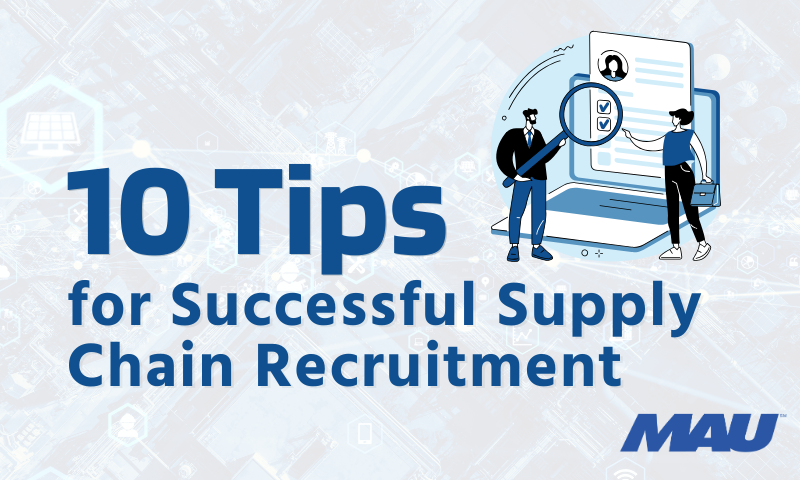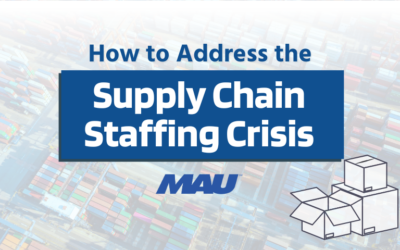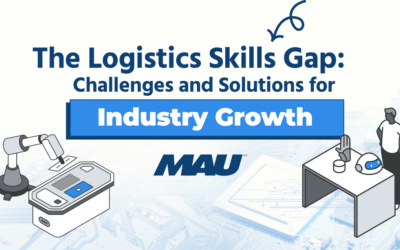With globalization and technological leaps, supply chains are becoming more complex, requiring skilled professionals who can adeptly manage logistics, procurement, and inventory management. But how do you recruit the best talent in such a specialized field? This blog post provides ten actionable tips for successful supply chain recruitment, crafted specifically for supply chain managers and HR professionals keen on optimizing their hiring process.
Understanding the Importance of Supply Chain Talent
Efficient supply chain management is critical for maintaining a competitive advantage. In recent years, the role of supply chain talent has become increasingly vital as companies strive to optimize their operations and deliver superior customer service. High-caliber professionals in this field are not just responsible for overseeing logistics; they are key players in strategic planning and innovation.
A well-managed supply chain can significantly reduce costs, streamline operations, and improve customer satisfaction. Recruiting the right talent not only supports operational goals but also drives financial performance. Companies that invest in skilled supply chain professionals often see better adaptability to market changes and enhanced efficiency across their operations.
Understanding the importance of supply chain talent is the first step in aligning your recruitment strategies with your company’s broader business goals. Recognizing this value will guide you in developing focused hiring approaches that attract top candidates.
1. Recognizing the Challenges in Supply Chain Recruitment
While the need for skilled supply chain professionals is evident, recruiting them poses unique challenges. The scarcity of qualified candidates is a significant hurdle, with demand often outstripping supply. Additionally, the diverse skill set required—ranging from technical proficiency to strategic thinking—can make finding the right fit particularly challenging.
Another challenge is the evolving nature of supply chain roles. With technology like AI and blockchain reshaping the landscape, candidates must be willing and able to adapt to new tools and processes. This dynamic environment requires recruiters to stay ahead of industry trends and understand the skills that will be needed in the future.
Furthermore, competition for top talent is fierce, with many companies vying for the same pool of candidates. To overcome these challenges, it’s crucial to develop a recruitment strategy that is both comprehensive and forward-thinking. Understanding these challenges will enable you to tailor your approach and effectively position your organization as an employer of choice.
2. Defining Clear Job Descriptions and Requirements
A well-crafted job description is the foundation of successful recruitment. It not only outlines the responsibilities and expectations of the role but also serves as a marketing tool to attract the right candidates. Start by clearly defining the core competencies and qualifications necessary for the position, ensuring they align with your organization’s strategic goals.
Include specific details about the role’s impact on the organization and any opportunities for growth and development. This information is crucial for attracting candidates who are both qualified and motivated. A transparent job description helps candidates self-select, reducing the pool to those who are genuinely interested and fit the role.
Additionally, ensure that your job descriptions are free from jargon and are easy to understand. Clear communication can prevent misunderstandings and set accurate expectations from the outset. By defining clear job descriptions and requirements, you increase the likelihood of attracting candidates who are well-suited to your organization.
3. Leveraging Technology for Efficient Screening
Technology plays a pivotal role in modern recruitment processes, offering tools that enhance efficiency and accuracy. Applicant tracking systems (ATS) can streamline the initial screening process by automatically filtering candidates based on predefined criteria. This allows HR professionals to focus their efforts on the most promising applicants.
Furthermore, AI-driven recruitment platforms can assess candidate profiles and resumes to provide insights into their suitability for a role. These tools analyze data such as work history, skills, and even online presence to give a comprehensive view of a candidate’s potential fit.
Virtual interviews and assessments have also become invaluable, especially in remote recruitment scenarios. These technologies save time and resources, allowing for a more flexible and inclusive recruitment process. By leveraging technology, you can enhance your screening process and make informed hiring decisions with greater precision.
4. Building a Strong Employer Brand
Your employer brand is a critical factor in attracting top talent. It encompasses the reputation and perception of your company as a place to work and reflects the values and culture of your organization. A strong employer brand can differentiate you in a competitive market, making it easier to attract and retain the best talent.
Start by clearly articulating your company’s mission, values, and what makes it unique. Highlight aspects such as career development opportunities, company culture, and employee benefits. Use platforms like LinkedIn, Glassdoor, and your own company website to showcase testimonials, employee experiences, and success stories.
Involving current employees in your branding efforts can also be beneficial. Encourage them to share their experiences and engage with potential candidates on social media. A robust employer brand builds trust and interest among prospective hires, positioning your company as an attractive option.
5. Engaging Passive Candidates
Passive candidates—those not actively seeking new opportunities—often represent some of the best talent available. Engaging these individuals requires a proactive approach that involves networking, relationship-building, and targeted outreach.
Start by identifying potential candidates through platforms like LinkedIn and industry-specific forums. Engage with them by sharing relevant content and participating in conversations that demonstrate your expertise and interest in their field.
Personalized messages that speak to their career interests and potential contributions to your company can spark interest.
Establishing long-term relationships with passive candidates can pay dividends when positions arise. Regularly update them on opportunities and invite them to company events or webinars. Engaging passive candidates expands your talent pool and increases the chances of finding the perfect fit for your organization.
6. Utilizing Data-Driven Recruitment Strategies
Data-driven recruitment strategies leverage analytics to improve decision-making and outcomes. By analyzing data trends, you can gain insights into candidate behavior, market dynamics, and the effectiveness of your recruitment efforts.
Metrics such as time-to-hire, cost-per-hire, and candidate satisfaction can help evaluate the success of your recruitment process. Additionally, predictive analytics can identify patterns and forecast future hiring needs, allowing you to plan proactively.
Data also plays a role in refining job descriptions and improving candidate experiences. By continuously analyzing and adjusting based on data, you create a recruitment process that is both efficient and aligned with organizational objectives. Data-driven strategies lead to better decision-making and improved recruitment outcomes.
7. Prioritizing Diversity and Inclusion
Diversity and inclusion are not just buzzwords; they are essential components of a successful recruitment strategy. A diverse workforce brings varied perspectives and experiences, fostering innovation and better decision-making.
Begin by examining your current recruitment practices to identify potential biases. Implement structured interview processes and diverse hiring panels to ensure fairness. Providing unconscious bias training for recruiters and hiring managers can also be beneficial.
Outreach to diverse talent pools is crucial. Partner with organizations that support underrepresented groups and participate in diversity-focused job fairs. By prioritizing diversity and inclusion, you enrich your workforce and create an environment where all employees can thrive.
8. Offering Competitive Compensation and Benefits
Competitive compensation and benefits are critical for attracting and retaining top supply chain talent. Conduct market research to ensure your offerings are aligned with industry standards and reflect the value of the positions you are hiring for.
Beyond salary, consider additional benefits that appeal to supply chain professionals. Opportunities for professional development, flexible work arrangements, and health and wellness programs can differentiate your offerings.
Transparency in compensation discussions is also important. Clearly communicate the full package, including bonuses, retirement plans, and other perks. By offering competitive compensation and benefits, you position your organization as a desirable place to work.
9. Establishing Strong Onboarding Processes
The onboarding process is a key factor in setting new hires up for success. An effective onboarding experience not only equips employees with the tools they need but also integrates them into the company culture.
Develop a structured onboarding program that includes orientation sessions, training modules, and opportunities for mentorship. Clear communication of expectations and goals helps new hires acclimate quickly and contributes to their productivity.
Regular check-ins during the onboarding period provide valuable feedback and allow for adjustments to ensure a smooth transition. A positive onboarding experience enhances employee engagement and retention, reinforcing their decision to join your organization.
10. Continuous Improvement and Feedback Loops
Recruitment is an ongoing process that benefits from continuous improvement. Encourage feedback from both candidates and hiring managers to identify areas for enhancement. Regularly review recruitment metrics and outcomes to assess the effectiveness of your strategies. Keep abreast of industry trends and best practices to remain competitive.
Implementing a culture of continuous improvement ensures your recruitment process evolves and adapts to changing needs. By incorporating feedback loops, you create a dynamic recruitment strategy that consistently attracts top talent.
Effective supply chain recruitment is a complex but vital process that requires careful planning and execution. By understanding the importance of supply chain talent, recognizing recruitment challenges, and implementing data-driven strategies, you can optimize your hiring process.
Prioritizing diversity, offering competitive benefits, and providing a positive onboarding experience further strengthens your recruitment efforts. Ultimately, by cultivating an engaging employer brand and leveraging technology, you position your organization as a leader in attracting and retaining high-caliber supply chain professionals.
For those ready to take their recruitment strategies to the next level, consider consulting with industry experts or accessing advanced recruitment tools tailored to supply chain needs. Investing in the right talent today ensures your company’s success and growth for the future.






